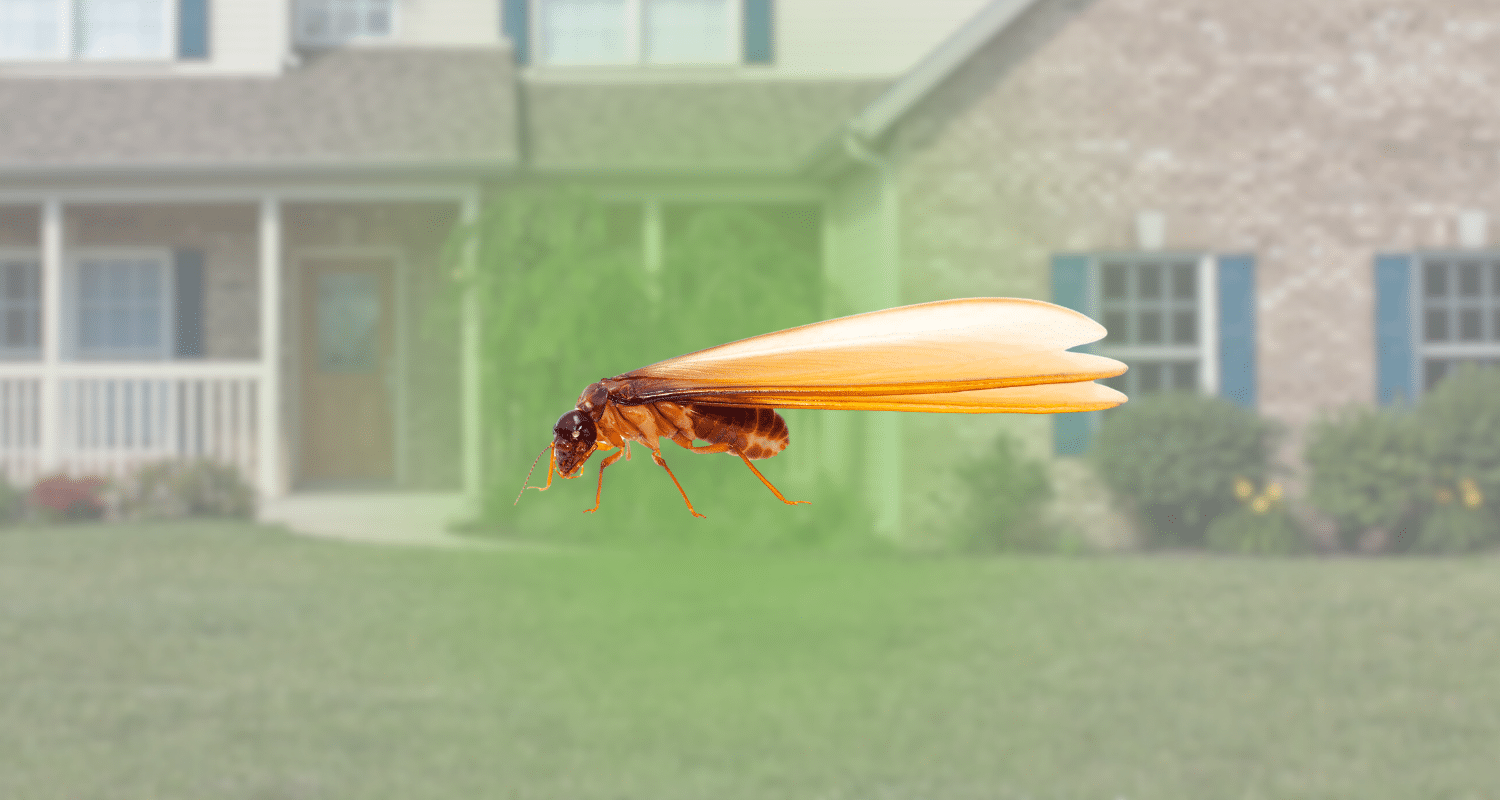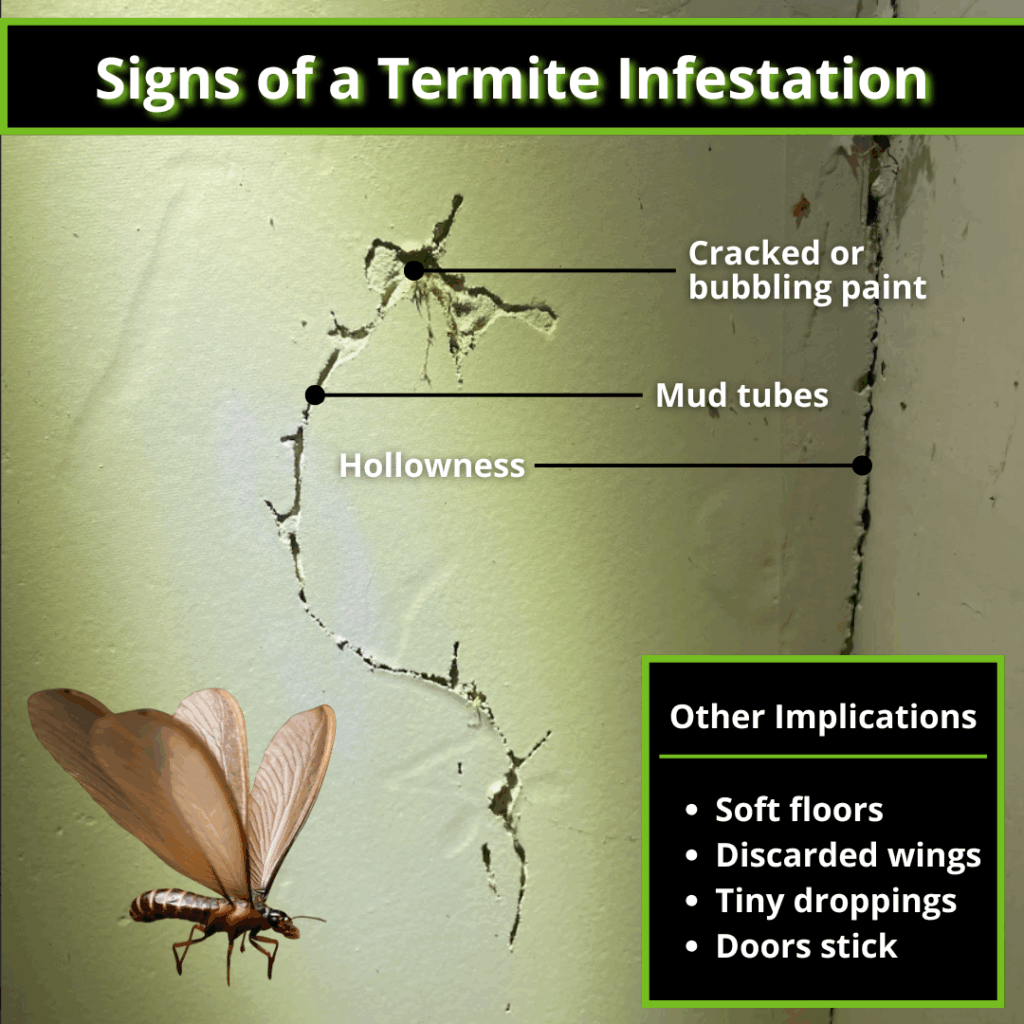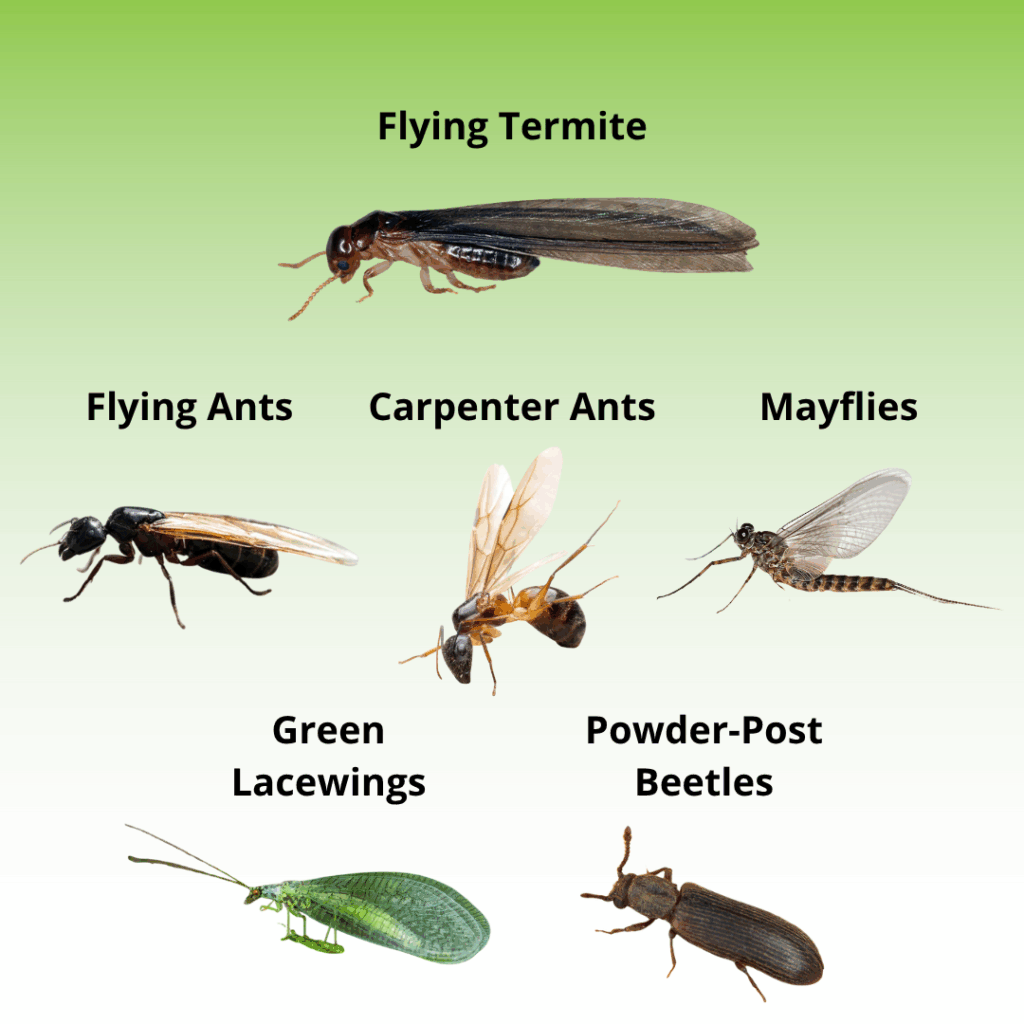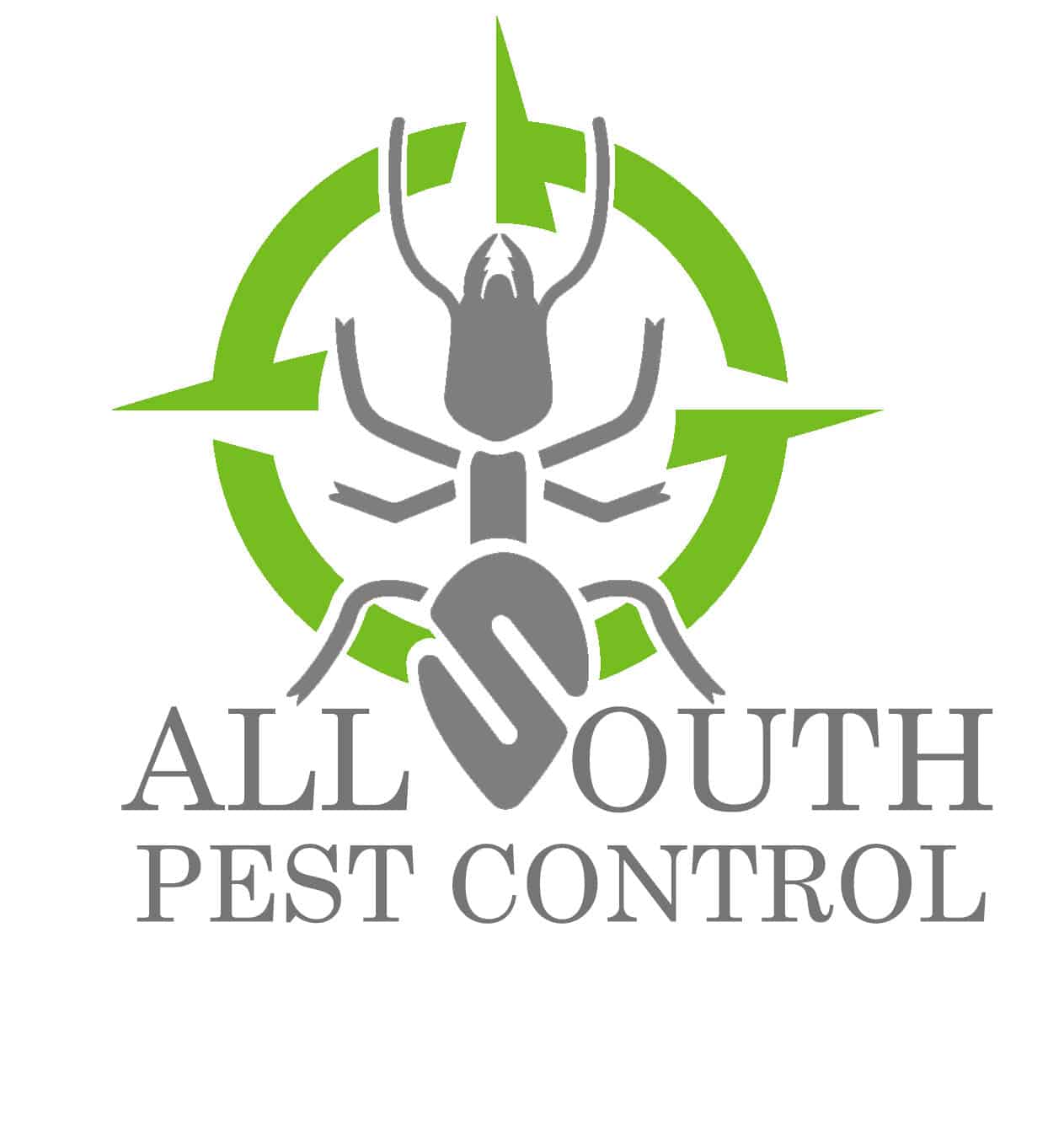
If you’ve ever noticed small winged insects swarming around your home, you may have felt a jolt of panic. Most homeowners immediately think of termites, and for good reason. Termites can silently destroy wood structures, leading to thousands of dollars in repairs.
But not all winged insects are termites. In fact, several common bugs look like flying termites, particularly during the warmer months when insects are more active.
Knowing the difference is the key to protecting your home and avoiding unnecessary stress or expense.
In this guide, we’ll break down what real flying termites look like, which bugs often get mistaken for them, and how to know when it’s time to act.
Why Bugs Are Often Mistaken for Flying Termites
Flying termites, known as alates, are the reproductive members of a termite colony. When the colony matures, they swarm to mate and start new colonies.
In Georgia’s warm, humid climate, this swarming typically occurs in spring and early summer, often after rain showers.
Because termite swarms often happen suddenly and in large numbers, they can easily cause alarm. Homeowners may see dozens of small insects around porch lights, windows, or door frames and assume an infestation has begun.
However, many insects swarm during the same conditions, such as ants, mayflies, or beetles. They often appear at night, shed their wings afterward, and gather around the same light sources as termites, which makes misidentification extremely common.
Swarming insects don’t always mean termites. Understanding what to look for can help you separate a harmless seasonal swarm from a serious infestation risk.

How to Identify Real Flying Termites
Before you can recognize the impostors, you need to know what genuine flying termites look like. These reproductive termites are distinct in several key ways.
Here’s a quick visual breakdown to help you compare:
| Feature | Flying Termites (Alates) |
| Body Shape | Straight waist with thick, uniform body |
| Antennae | Straight or slightly curved, resembling small beads |
| Wings | Two pairs of equal-length wings, longer than their body |
| Color | Light brown or beige, sometimes translucent |
| Behavior | Swarm around light sources, especially after rain |
| Lifespan | Short-lived and shed wings soon after mating |
After swarming, flying termites discard their wings, leaving small piles that often accumulate on windowsills or near vents. This is one of the most visible early signs that termites may be nearby.
Signs of Termite Infestation
Spotting flying termites is just one clue. Active termite infestations leave behind several distinct signs, many of which go unnoticed until significant damage has occurred. Here’s what to watch for around your home:
Mud Tubes
Termites build pencil-sized tubes made of mud and saliva along walls, foundations, or crawl spaces. These act as tunnels to protect them from air and light while traveling between their nest and food source.
Hollow or Damaged Wood
When termites feed, they hollow out wood from the inside, leaving a thin outer shell. Knock on suspected areas; if it sounds hollow or brittle, it could indicate termite activity.
Soft or Buckling Floors
Termite damage can weaken sub-flooring, making floors feel soft or spongy underfoot. Over time, this can cause visible warping or uneven spots.
Cracked or Bubbling Paint
As termites tunnel near drywall or behind paint, moisture builds up, leading to bubbling, peeling, or uneven wall textures.
Discarded Wings
After a swarm, you may find wings near light fixtures, window frames, or sliding doors. This is one of the clearest signs that swarmers have entered your home.
Tiny Droppings (Frass)
Drywood termites, in particular, leave behind small, sand-like droppings that collect near infested areas.
Doors or Windows That Stick
As termites consume wood, they can cause warping that makes doors or windows difficult to open and close.
If you notice two or more of these indicators, it’s time to schedule a professional inspection to confirm whether you’re dealing with termites or another pest.

Common Bugs That Look Like Flying Termites
Now that you know what to look for, let’s identify the insects most often mistaken for termites and how to tell them apart.
1. Flying Ants
Flying ants are by far the most common termite impostors. Like termites, they swarm during warm months to reproduce, often around the same time of year.
Because they also have two pairs of wings and gather near lights, it’s easy to see why homeowners confuse them.
How to tell them apart:
- Flying ants have a pinched waist, while termites have a straight, uniform body.
- Their antennae are bent, unlike the straight antennae of termites.
- Their front wings are longer than the back pair, while termites’ wings are equal in length.
- Flying ants are usually seen in smaller swarms and are more active during daylight hours.
Local insight: In Georgia, flying ant swarms are common in May through July, especially near trees and lawns after rainfall. Though harmless to structures, flying ants can still enter homes through cracks and small openings.
2. Carpenter Ants
Carpenter ants are another species often mistaken for termites, especially when seen near wood. These large black ants nest inside damp wood, but don’t actually eat it; they excavate tunnels for nesting.
How to distinguish carpenter ants:
- They have elbowed antennae and a narrow waist.
- Their tunnels appear smooth and clean, unlike the rough, muddy galleries created by termites.
- They leave behind sawdust-like shavings, not mud or frass.
Behavioral difference: Carpenter ants are nocturnal and prefer moist or decaying wood, such as leaky window frames or damp attic beams. Termites, on the other hand, can destroy even dry, sound wood.
3. Mayflies
If you live near a lake or pond, you’ve probably seen swarms of mayflies. These delicate, long-tailed insects have clear wings and thin bodies that can resemble flying termites from afar.
How to tell them apart:
- Mayflies have two or three long tail filaments, which termites do not.
- They don’t enter homes or cause any damage to wood.
- They are short-lived, usually surviving only a few hours to mate and lay eggs.
Though mayflies can appear in large numbers around porch lights, they’re completely harmless and even beneficial to local ecosystems.
4. Green Lacewings
At a glance, green lacewings might look like light-colored termites because of their transparent wings. However, lacewings are actually bright green with slender bodies and golden eyes.
Key identifiers:
- Net-like wings with visible veins
- Bright green or yellow color
- Found mostly outdoors near plants
- Feed on small garden pests, not wood
These beneficial insects help reduce aphid populations, making them helpful garden allies rather than home invaders.
5. Powder-Post Beetles
Powder-Post beetles don’t swarm like termites, but can create damage that’s often mistaken for termite activity. They infest hardwoods like furniture, flooring, and trim, leaving behind a fine, talcum-like dust.
What sets them apart:
- They leave tiny, round exit holes in wood surfaces.
- Their damage includes powdery residue (frass), unlike the packed mud seen with termites.
- They prefer hardwoods (oak, ash, mahogany), whereas termites prefer softwoods.
Powderpost beetles can be persistent and damaging, but they don’t spread as aggressively as termites. Still, if you notice their telltale exit holes, it’s best to have a professional assess the extent of the damage.
Why Correct Identification Matters
Misidentifying bugs that look like flying termites isn’t just a small mistake. It can have serious financial and structural consequences.
Here’s why it matters more than you might think:
- Wasted Money on Wrong Treatments
Many homeowners panic at the sight of flying insects and immediately buy termite sprays or schedule treatments. If the insects are actually flying ants or beetles, these treatments do nothing. Professional pest control specialists identify the species first to ensure the correct solution is applied. - Potential for Hidden Structural Damage
If you assume the insects are harmless, but they’re actually termites, the colony can continue destroying wood silently. Termites work 24/7, and by the time visible damage appears, repair costs can be significant. - Different Prevention Needs
Each pest species has its own attractants. For example, carpenter ants thrive in moist wood, while termites prefer cellulose materials near soil contact. Identifying the pest correctly allows you to target and prevent future infestations effectively. - Peace of Mind and Long-Term Protection
Knowing exactly what’s in your home helps you take calm, confident action instead of worrying unnecessarily. A quick professional inspection can give you a definitive answer and a plan tailored to your home’s needs.
In Georgia, where humidity, rainfall, and older wood-frame homes are common, correct identification is critical. The same conditions that attract flying ants or mayflies can also trigger termite swarms. That’s why a trained eye makes all the difference in keeping your home safe.
What to Do If You See Flying Bugs at Home
If you notice swarming insects around your home, don’t panic, but don’t ignore them either. Here’s what to do right away:
- Document the insects. Take clear photos or videos.
- Collect samples safely. Place a few in a clear container if possible.
- Note the time and location. Swarms near windows, doors, or foundation vents often point to specific entry points.
- Look for supporting evidence. Check for mud tubes, discarded wings, or soft wood.
- Call a local pest expert. An inspection from All South Pest Control can confirm the species and recommend a proper treatment or prevention plan.
Related Questions
What time of year do flying termites appear?
Termites typically swarm in spring and early summer, especially after rainfall and when humidity rises.
Can flying ants damage wood?
Flying ants don’t eat wood, but carpenter ants can weaken it over time by tunneling.
Why do I find wings but no bugs?
Termites shed their wings after mating, leaving piles near walls, windows, vents, or doors. This is a clear warning sign of nearby activity.
How can I prevent these insects?
Reduce moisture, seal cracks, store firewood away from your home, and schedule regular pest inspections.
When to Call a Professional
Even if you’re unsure whether you’ve seen termites or another insect, it’s always safest to get a professional inspection. Experts can identify the species accurately, confirm whether there’s damage, and create a prevention plan customized for your property.
Georgia’s environment makes it easy for termites and other pests to thrive, so professional help is your best defense against costly surprises.
Conclusion
It’s common to confuse bugs that look like flying termites with the real thing, but knowing the difference helps protect your home and your peace of mind. Whether you’ve seen flying ants, beetles, or actual termites, identification is the first and most important step.
All South Pest Control provides trusted termite inspections and pest management across Georgia. Our experts can pinpoint exactly what’s swarming around your home and ensure your property stays safe year-round.
Schedule your inspection today to get answers fast and keep your home protected from hidden threats.

Recent Comments